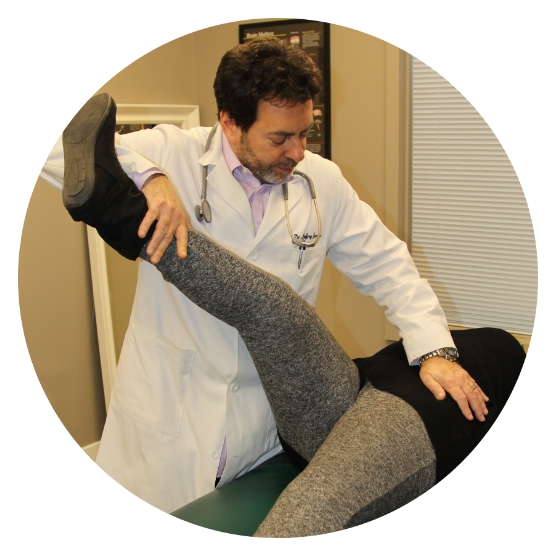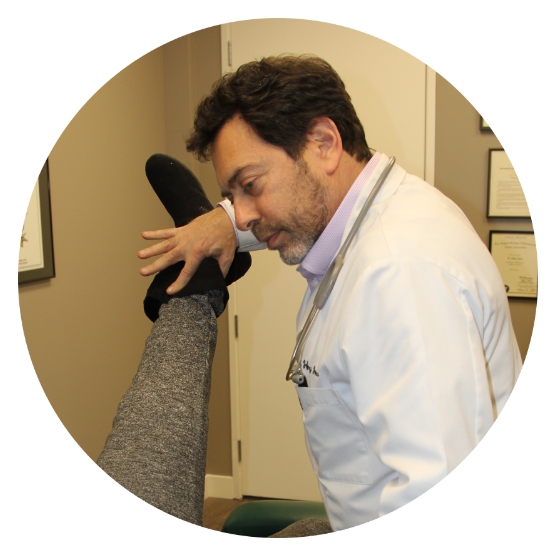Functional Neurological Orthopedic Rehabilitation Procedures
(FNOR™)
FNOR™ was born out of the modern research of neuroscience and rehabilitation. FNOR™ is based on the concept that musculoskeletal injury (i.e. injury to joints, muscles, tendons and ligaments), particularly injury associated with pain that lasts a long time after the injury, most often causes changes in the nervous system (brain and nerves of the body). This is why many patients fail to respond to conventional physical therapy and medical measures that only address the injured or painful area – these limited approaches do not address the changes in the nervous system that result from injury.
This might be likened to only removing an infected flash drive from your computer, after the virus it delivered has already infected your system – the flash drive is where the problem started, but it is now only part of a bigger, growing problem. Modern research suggests that chronic pain and injury are very much like this.
FNOR™ practitioners treat the body and brain at the same time through the use of a range of unique techniques. Some may look similar to common physical therapy methods and some look very different (almost space-age), but all FNOR™ methods are non-invasive.
In consulting us, many patients report that they feel like
“somebody finally understands their pain”
and its effects on their life.
We utilize a range of non-invasive, modern techniques to treat pain, including the most stubborn forms of chronic pain, including post-surgical pain. In fact, the FNOR™ system was first developed to treat pain sufferers, many of whom had undergone multiple failed surgeries.
It is likely that you will not recognize many of the non-invasive techniques utilized to reduce your pain. Most of these techniques are directed at the various nerves of the body and limbs (called the peripheral nervous system) and the brain and spinal cord (called the central nervous system.) By going after changes in the nervous system, we aim to reverse the effects of chronic pain on your body, boosting the function of your nervous system rather than just dampening the areas dealing with pain.
The result is that, following treatment, you are literally a higher functioning individual with an increased capacity for work, performance, and function.
“Our objective is to help you get your life back, get you on your own feet (rather than building dependence on yet another therapy), and show you how to keep going.”
If you are a chronic pain sufferer or someone who has seen multiple specialists for your injury, then you have likely seen:
physical (physio-) therapists
chiropractors
massage therapists
medical physicians
and even surgeons.
You probably noticed that each had their own approach to your problem. As with many chronic pain sufferers, you may have found that each of these approaches had some, albeit limited benefit, but none really completely resolved your problem.
While each healthcare discipline and approach has its merits — for most people, chronic pain and injury requires a multi-pronged approach that involves a range of methods rather than trying them one-at-a-time. In fact, in many cases, the process of undergoing therapies one-at-a-time can actually prolong recovery and complicate the problem.
The FNOR™ approach was developed by a team of specialists, drawing from elements of medicine, physical (physio-) therapy, psychology, complementary and alternative approaches and most of all, clinical neuroscience. For this reason, some of the elements of the FNOR™ approach may be familiar to you, while others will be quite different. It is likely, however, that the overall experience of FNOR™ treatment will be quite different and probably a bit more intensive than your previous experience. You will also likely notice the use of a number of new technologies that are aimed at analyzing your brain and nervous system, movement and physiology. The use of modern technologies allows our FNOR™ practitioners to develop unique treatment approaches based on sensitive measures of function.
FNOR™ helps us rehabilitate the following conditions:
SPINE CONDITIONS
(e.g. lower back pain, neck pain, spinal stenosis, disc injury)
HIP & LEG PROBLEMS
(e.g. IT band syndrome, hip arthritis and pain, knee pain, runner’s knee, Achilles tendon pain, plantar fasciitis)
ARM & SHOULDER CONDITIONS
(e.g. rotator cuff injury, frozen shoulder, shoulder pain, tennis elbow, golfers elbow)
Because the FNOR™ system addresses body and brain, it is also used to rehabilitate those who have suffered from serious injuries including:
Brain injury (e.g. stroke, concussion)
Instability and frequent falling
Traumatic injuries involving body and brain issues
Learn more about some of the conditions we treat using FNOR™
for your complete assessment
Call (310) 396-3100 today!









